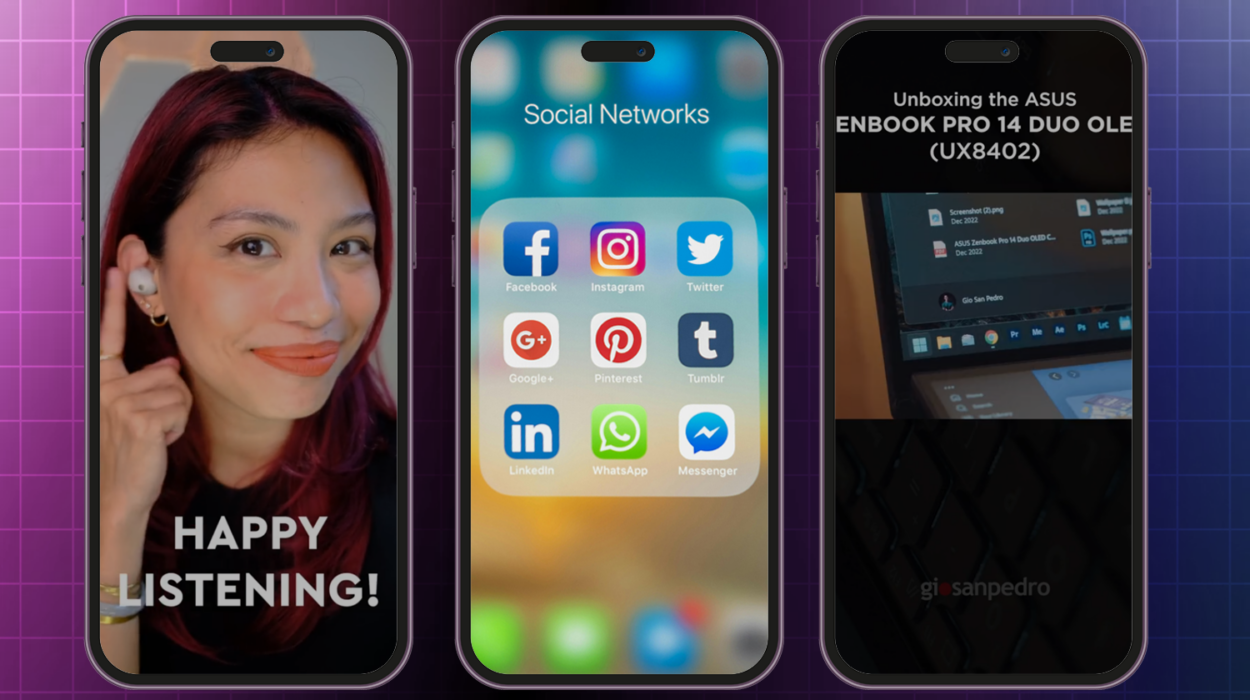Selecting the right platform for your FinTech video content is as crucial as the content itself, impacting its reach and engagement. By using data-driven strategies, we’ll explore how to optimize platform choice, ensuring videos resonate with their intended audience.
In a recent Gitnux study, only 33% of adults demonstrated financial literacy. This poses a significant challenge for FinTech companies trying to convey their services to a broader audience effectively. Fortunately, the rise of a video-centric market provides an answer.
Videos have emerged as a crucial tool for conveying a FinTech brand’s narrative. In line with this, social media platforms have evolved into pivotal spaces for financial explainer videos. For video producers, marketing directors, and social media managers, determining the right platform to share these stories is as vital as the content. Why? Because each social media channel has a distinct environment, audience, and engagement potential. Even the most captivating video might not resonate if it doesn’t reach the right audience.
At the center of our approach to video marketing is data. By examining platform-specific data and trends, we can optimize where a video is posted, ensuring it performs at its best, garners views, and most importantly, resonates with the audience.
In this article, we’ll dive deep into the science of choosing the right platform for your FinTech videos, drawing from data-driven strategies and insights to guide your digital marketing efforts.
Blog Overview
- Understand Your Audience
- Tailor Your Video Content
- Optimize Video Content Per Platform
- Track and Measure Your Video’s Performance
- Embrace Authenticity Amid Trends
- Collaborations in Video Marketing
- Future Proof Your Video Content
- What’s Next?
Understand Your Audience
In video marketing, one size doesn’t fit all. For video producers, understanding who you’re talking to is the first step to ensuring your content’s success. Here’s how to narrow it down:
Define Your Target Demographic
Before you hit the ‘upload’ button, you must know who you want to watch your video. Are you targeting young adults, professionals, or maybe parents? Pinpointing this will shape your content and where you post it.
Identify Your Primary Audience
| SOCIAL MEDIA CHANNEL | PRIMARY AUDIENCE |
| TikTok | A hub for Gen Z, perfect for content that’s trendy and dynamic. |
| The go-to for professionals. Ideal for corporate videos, tutorials, and industry insights. | |
| A mix, but mostly millennials. Best for visually appealing content, short stories, and behind-the-scenes glimpses. | |
| Broad audience, but notably popular among older millennials and Gen X. Suitable for shareable content, product launches, and community engagement. | |
| YouTube | Similar to Facebook, YouTube has a broad audience that ranges from children to adults. It is best used for large-scale brand videos. |
| A text-first platform for millennials and Gen Z. It is best for fast-paced conversations and trends. This platform is best used for engaging with audiences. |
Meet Your Audience Halfway
Once you know where your audience hangs out, consider what they like to do there. For instance, while TikTok users might appreciate a fun, fast-paced tutorial, LinkedIn users might prefer a more in-depth, professional approach. Tailoring your content to the platform’s audience behavior and culture increases the chances of it being viewed and shared.
Tailor Your Video Content
Different social media platforms cater to different audiences and content preferences. For those producing and marketing video content, understanding these nuances can be the key to unlocking unparalleled engagement. Here’s a breakdown:
| SOCIAL MEDIA CHANNEL | NATURE OF THE PLATFORM | BEST VIDEOS | TIPS |
| YouTube | Think of it as the grand theater of online video—vast and designed for diverse content. | Long-form content, deep dives, tutorials, and product reviews. | Focus on clear titles, descriptions, and tags. Thumbnails can make or break your video’s click-through rate. Corporate language works well in this platform. |
| The town square where people of all ages gather, chat, and share. | Shareable clips, brand stories, live sessions, and community-driven content. | Engage with your community. Respond to comments, and consider Facebook Premiere for product launches or announcements. | |
| A vibrant art gallery where visuals are king. | Short clips, captivating stories, and reels for trendy content. | Ensure your video is aesthetically pleasing. Use relevant hashtags and engage with comments for better reach. | |
| TikTok | The trendy nightclub of platforms where short, catchy content reigns supreme. | Quick hacks, brand challenges, and riding on current trends. | Engagement is rapid. Hop onto trending challenges or sounds and ensure your video is fun and relatable. Make sure to use a casual tone when communicating with your audience. |
| The conference room where professionals exchange ideas and updates. | Thought leadership, company updates, industry trends, and professional insights. | Maintain a professional tone. Post during business hours and engage with comments for maximum visibility. | |
| The bustling café where news breaks and trends emerge. | Quick updates, news snippets, brand announcements, and bite-sized video content. | Engage with trending topics, use hashtags wisely, and join relevant conversations promptly. Brands often use this to trend-jack and participate in online challenges. |
Choosing a platform isn’t just about popularity; it’s about matching your content’s style, length, and message with what the platform’s audience prefers and expects. By aligning these elements, you ensure your FinTech video gets the attention and engagement it deserves.
To learn more about the best aspect ratio and total running time per video, check out our blog, How to Use Videos in Your Digital Marketing Strategies.
Optimize Your Video Content Per Platform
No two social media platforms are the same, especially when it comes to how they rank and promote content. For social media managers, understanding these algorithms can be the key to maximizing video views and engagement. Let’s unravel the mystery behind each platform:
Understand Each Platform’s Unique Algorithm
Every platform has its own criteria to decide which content gets prominence. By aligning with these criteria, your videos are more likely to top feeds and snag those precious views.
Best Practices for Video Optimization
| SOCIAL MEDIA CHANNEL | BEST PRACTICES |
| YouTube | Keywords are King: Research and incorporate relevant keywords in your video title, description, and tags. Engagement Metrics: Likes, shares, comments, and watch time influence video ranking. Encourage viewers to engage with your content. Consistency: Regular uploads can boost channel visibility. |
| Relevance Score: Videos that resonate with viewers, leading to more reactions and shares, tend to perform better. Video Length: While shorter videos (under 2 minutes) are popular, longer videos with high retention can also get priority. Original Content: Facebook prioritizes unique content, so avoid repetitive or reused videos. | |
| Engagement: Likes, comments, and shares can push your video to more feeds. Engage with your audience to build rapport. Relevance: Using appropriate hashtags can place your video before a broader yet targeted audience. Instagram Stories & Reels: Regular updates can increase your overall profile visibility. | |
| TikTok | Initial Engagement: How viewers engage with your video in the first few hours can dictate its overall reach. Relevance to Trending Topics: Utilize trending music or challenges to boost your video’s chances of being featured. Video Completion Rate: If viewers watch your video from start to finish multiple times, it signals the algorithm’s quality. |
| Professional Relevance: Content that adds value to the professional community gets more visibility. Engagement: Early likes, shares, and comments can propel your video to a wider audience. Use of Tags: Categorizing your content helps it reach the right professionals. | |
| Timeliness & Relevance: Fresh content related to trending topics can increase visibility. Engagement: Retweets, likes, and comments can amplify your video’s reach. Use of Hashtags: Relevant hashtags can position your video amidst trending conversations. |
Optimization isn’t about gaming the system–it’s about aligning with what viewers want to see. By understanding and adapting to platform-specific quirks, you ensure that your content isn’t just seen but also appreciated and shared.
Track and Measure Your Video’s Performance
As with any digital marketing strategy, simply deploying a video isn’t the endgame. For video producers, marketing directors, and social media managers, it’s important to understand how your video performs to refine future content strategies. Here’s a primer on Key Performance Indicators (KPIs) you should be tracking:
KPIs to Track
| KPI | DESCRIPTION |
| Views | The most basic metric. It indicates how often your video has been watched. It doesn’t provide an in-depth look at engagement or viewer retention, however. |
| Engagement | Likes, shares, comments, and reactions. This is a strong indicator of how your audience feels about your content. |
| Watch Time or Retention Rate | Knowing how long viewers stay can help assess if your video is captivating from start to finish. |
| Click-Through Rate (CTR) | Especially crucial for videos with a call-to-action. It shows how many viewers took the desired action after watching. |
| Conversion Rate | For videos meant to sell or get sign-ups, this metric measures actual results, showing how many viewers took the end-goal action. |
| Feedback and Comments | Beyond mere numbers, qualitative feedback can offer insights into what viewers liked or areas for improvement. |
Tools to Measure KPIs
While platform-specific analytics like YouTube Analytics or Facebook Insights are valuable, consider tools like:
- Google Analytics: To track video-driven website traffic and conversions.
- Sprout Social: For in-depth social media performance metrics.
- Media-Meter: A one-stop shop for your media monitoring needs, whether digital or traditional.
Refine Your Strategy
Remember, data is your friend. Use these KPIs not just as a scorecard, but as a compass. Analyze the numbers, learn from them, and refine your video content strategy to keep improving.
Embrace Authenticity Amid Trends
In the ever-evolving world of social media, what’s in magazines today might be outdated tomorrow. But for social media managers, while keeping a pulse on the latest trends is essential, it’s equally vital not to lose the brand’s unique voice. Here’s how you can balance things out:
Yes, Trends are Tempting
Harnessing the power of a trending topic or style can give your video a significant boost in visibility. It’s like riding a wave: it is easier to go with the flow than against it.
Identify Relevant Trends
Not all trends are relevant for every brand—especially for FinTech brands.
- Research Tools: Google Trends, BuzzSumo, Media-Meter, or in-platform analytics can spotlight what’s trending.
- Community Engagement: Engaging with your audience can provide insights into their current interests.
Stay True to Your Brand
While leveraging trends, it’s important to keep the essence of your brand intact.
- Consistent Messaging: Ensure that your video, even when chasing a trend, aligns with your FinTech brand’s core message.
- Quality Over Quantity: It’s better to produce one high-quality video that aligns with your brand than ten that stray off course.
Collaborations in Video Marketing
Navigating the world of video content can sometimes feel like a solo journey. But there’s immense power in collaboration, whether it’s with other brands, influencers, or even your audience. Here’s how collaborations can amplify your video marketing efforts:
Collaboration Types
- Brand Collaborations: Partner with a brand that aligns with your values. This is not just about logos, but content that synergizes both brands’ strengths.
- Influencer Collaborations: Engage influencers who resonate with your brand. They bring not just their audience but a unique voice that can give a fresh spin to your content.
- Audience Collaborations: User-generated content or community-driven challenges can foster deeper connections and drive engagement.
Do’s and Don’ts in Video Collaboration
| DO’s | DON’Ts |
| Research potential collaborators to ensure they align with your brand’s values. | Force a collaboration that feels unnatural or off-brand. |
| Communicate clearly. Ensure both parties are on the same page regarding content goals. | Overwhelm the content with too many messages or calls to action. |
| Respect and appreciate the audience or brand you’re collaborating with. | Forget to cross-promote on various channels for maximum reach. |
Measure Video Success
It’s essential to track how collaboration videos perform compared to solo content.
- Engagement Metrics: Are there increased likes, shares, or comments?
- Audience Growth: Monitor if there’s a spike in followers or subscribers post-collaboration.
- Feedback: What’s the sentiment around the collaboration? Is it positive, or are there areas to refine in future partnerships?
Future Proof Your Video Content
Video marketing doesn’t stand still. With technology advancing rapidly and audience preferences shifting, it’s imperative for video producers, marketing directors, and social media managers to stay ahead of the curve. Here’s how to future-proof your video strategy:
Stay Updated
- Workshops and Webinars: Enroll in training sessions that focus on emerging video trends and techniques.
- Industry Journals and Blogs: Regularly read trusted sources that discuss the future of video marketing.
- Tech Expos and Conferences: Where innovations are showcased, and industry leaders share their visions.
Invest in New Technologies
Quality isn’t just about content; it’s also about presentation. As 4K, VR, and AR become more commonplace, consider investing in:
- Advanced Editing Software: For enhanced graphics, sound, and effects.
- Modern Equipment: Drones, stabilizers, and high-resolution cameras can elevate production value.
- AI Editing Tools: Tools like Synthesia, InVideo, and Rawshorts will make your video production process more efficient.
You can read more about these tools in one of our blogs, 5 AI Tools for Efficient Video Editing in 2023.
Diversify Your Content
Avoid putting all your eggs in one basket.
- Explore New Platforms: Even if a platform is new, creating a presence can be beneficial.
- Experiment with Formats: Try live streams, interactive videos, or even short documentaries.
Take Note of Audience Feedback
The best predictors of future trends are often the viewers themselves.
- Surveys and Feedback Forms: Directly ask your audience what want to see next.
- Engage in Comments: A casual conversation can provide valuable insights.
What’s Next?
In video marketing, understanding your platform, audience, and evolving trends is key. Whether you’re a seasoned video producer, a strategic marketing director, or an agile social media manager, it’s imperative to make data-driven decisions, embrace collaborations, and stay adaptable to the shifting landscape. By doing this, you’ll increase your video views and build stronger relationships with your audience, making sure your content stays relevant over time.
M2.0 Communications is a video production company that offers content creation, content development, and video production services to engage your target audience. Visit our case studies page to learn more about the brands we collaborate with.


